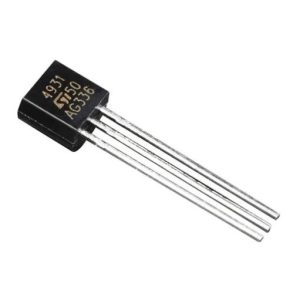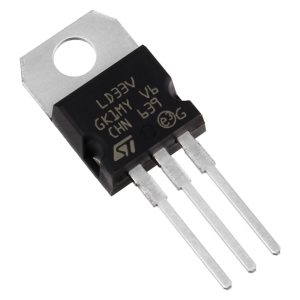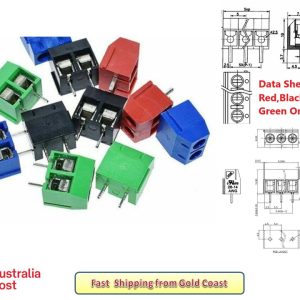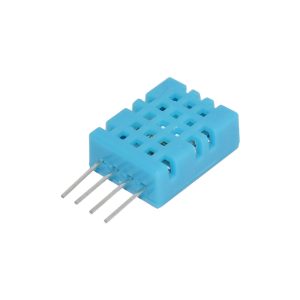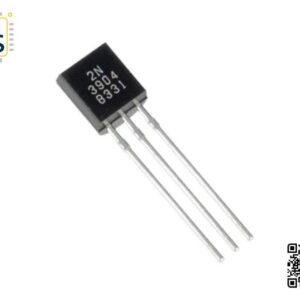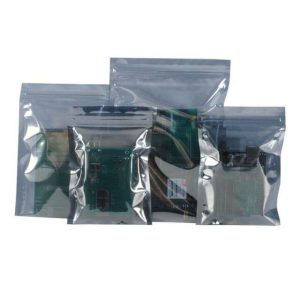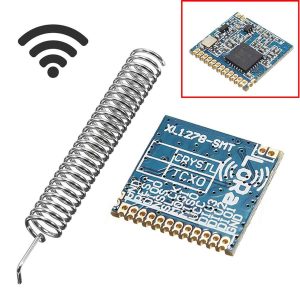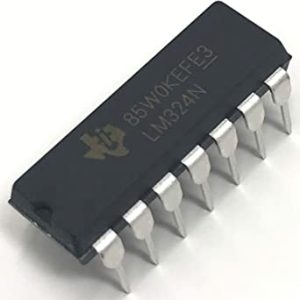24AA256-I/P EEPROM – 256kbit 8bit
Electrically Erasable Programmable Read-Only Memory (EEPROM) capable of operation across a broad voltage range of 1.8 to 5.5V
34 in stock
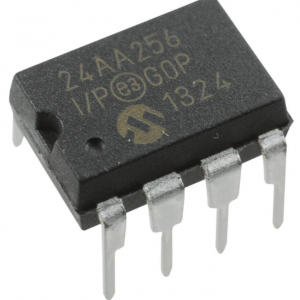
34 in stock
Features
- Low-power CMOS technology
- 2-wire serial interface (I²C™ compatible)
- Cascadable up to eight devices
- Self-timed write cycle
- 64-byte page write buffer
- 5ms Maximum write cycle time
- Hardware write-protect for the entire array
- Output slope control to eliminate ground bounce
- Schmitt trigger inputs for noise suppression
- 1000000 Erase/write cycles
- Electrostatic discharge protection >4000V
- Data retention >200 years
The 24AA256-I/P is a 256kB I2C CMOS serial Electrically Erasable Programmable Read-Only Memory (EEPROM) capable of operation across a broad voltage range of 1.8 to 5.5V. It has been developed for advanced, low-power applications such as personal communications or data acquisition. This device also has a page write capability of up to 64 bytes of data. This device is capable of both random and sequential reads up to the 256K boundary. Functional address lines allow up to eight devices on the same bus, for up to 2Mb address space.
EEPROM (also E2PROM) stands for electrically erasable programmable read-only memory and is a type of non-volatile memory used in computers, integrated into microcontrollers for smart cards and remote keyless systems, and other electronic devices to store relatively small amounts of data by allowing individual bytes to be erased and reprogrammed.
EEPROMs are organized as arrays of floating-gate transistors. EEPROMs can be programmed and erased in-circuit, by applying special programming signals. Originally, EEPROMs were limited to single-byte operations, which made them slower, but modern EEPROMs allow multi-byte page operations. An EEPROM has a limited life for erasing and reprogramming, now reaching a million operations in modern EEPROMs. In an EEPROM that is frequently reprogrammed, the life of the EEPROM is an important design consideration.
Flash memory
Flash memory is a type of EEPROM designed for high speed and high density, at the expense of large erase blocks (typically 512 bytes or larger) and a limited number of write cycles (often 10,000). There is no clear boundary dividing the two, but the term “EEPROM” is generally used to describe non-volatile memory with small erase blocks (as small as one byte) and a long lifetime (typically 1,000,000 cycles). Many microcontrollers include both: flash memory for the firmware, and a small EEPROM for parameters and history.
As of 2020, flash memory costs much less than byte-programmable EEPROM and is the dominant memory type wherever a system requires a significant amount of non-volatile solid-state storage. EEPROMs, however, are still used on applications that only require small amounts of storage, like serial presence detection.
History
In the early 1970s, some studies, inventions, and development for electrically re-programmable non-volatile memories were performed by various companies and organizations. In 1971, the earliest research report was presented at the 3rd Conference on Solid State Devices, Tokyo in Japan by Yasuo Tarui, Yutaka Hayashi, and Kiyoko Nagai at Electrotechnical Laboratory; a Japanese national research institute. They fabricated an EEPROM device in 1972 and continued this study for more than 10 years. These papers have been repeatedly cited by later papers and patents.
One of their research studies includes MONOS (metal-oxide-nitride-oxide-semiconductor) technology, which used Renesas Electronics’ flash memory integrated into single-chip microcontrollers.
In 1972, a type of electrically re-programmable non-volatile memory was invented by Fujio Masuoka at Toshiba, who is also known as the inventor of flash memory. Most of the major semiconductor manufactures, such as Toshiba, Sanyo (later, ON Semiconductor), IBM, Intel, NEC (later, Renesas Electronics), Philips (later, NXP Semiconductors), Siemens (later, Infineon Technologies), Honeywell (later, Atmel), Texas Instruments, studied, invented, and manufactured some electrically re-programmable non-volatile devices until 1977.
Reference
YouTube Video on Using an EEPROM to replace combinational logic
Other Related Products
| Weight | 0.005 kg |
|---|---|
| Dimensions | 2 × 1.5 × 1.5 cm |
| Pack Qty | 1 Pack, 5 Pack |
Product Applications
Current Product Support
| SKU | Product | Type | Download/View |
|---|---|---|---|
| TS-C029 | 24AA256-I/P EEPROM – 256kbit 8bit - 24AA256 | Datasheet | Download |


